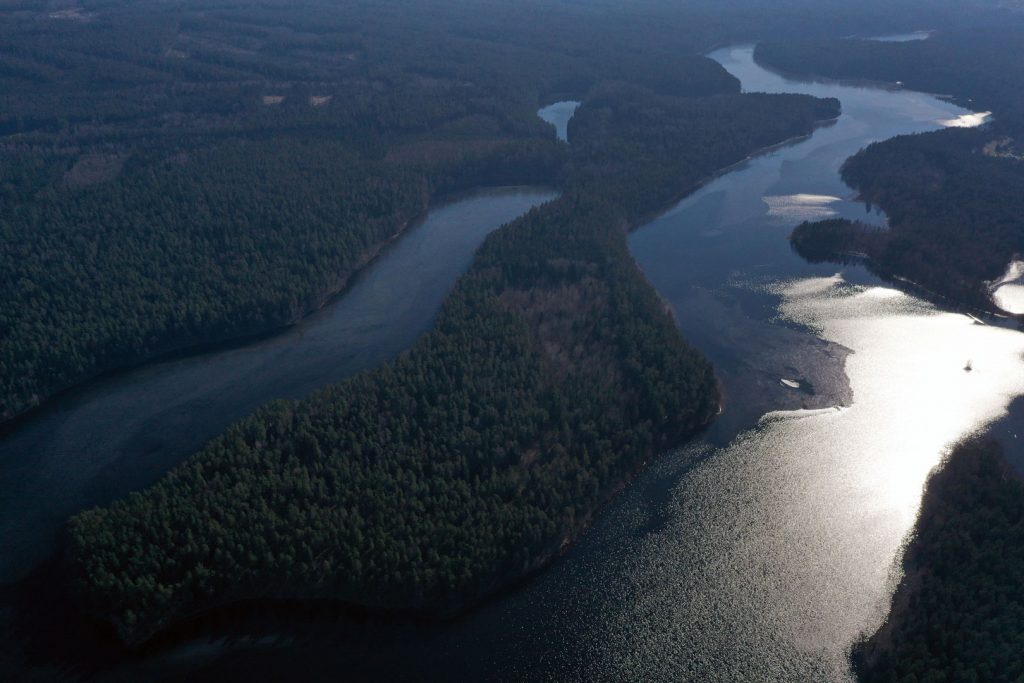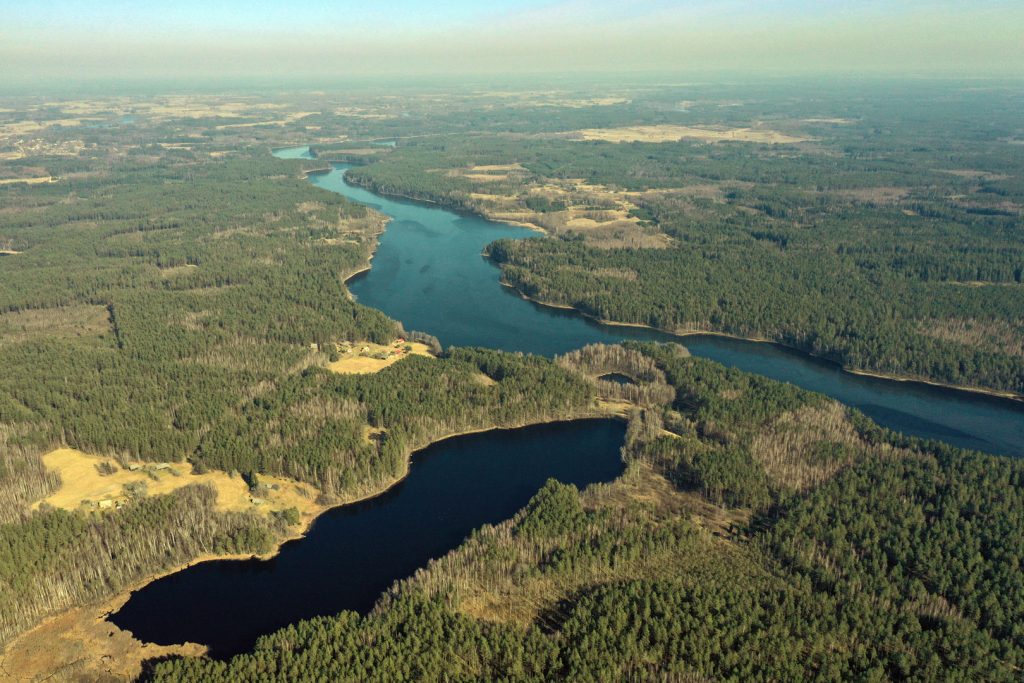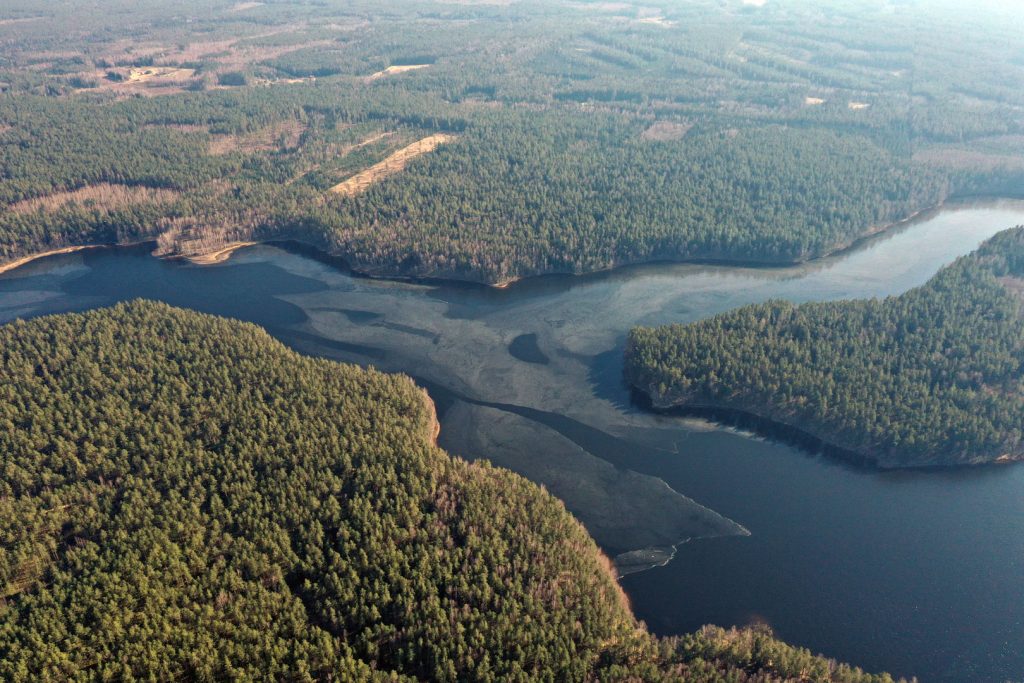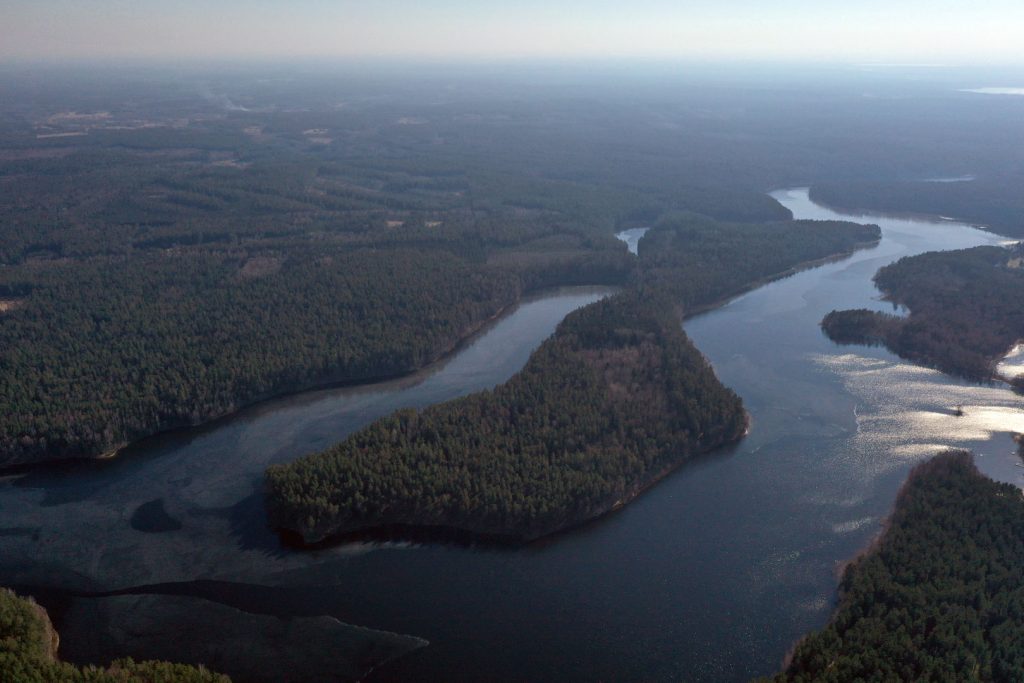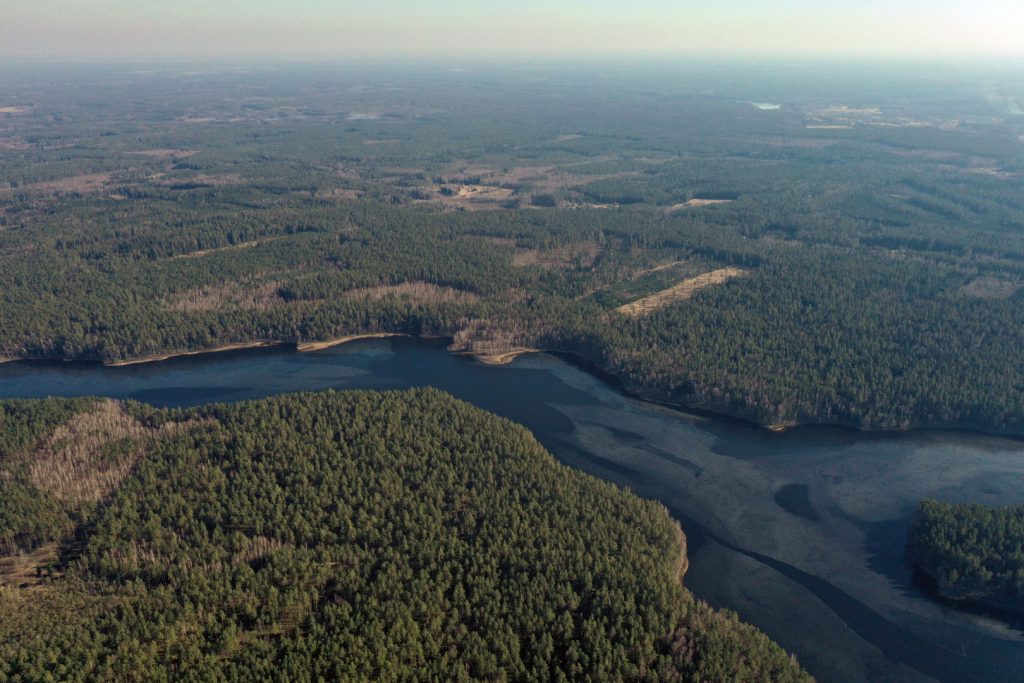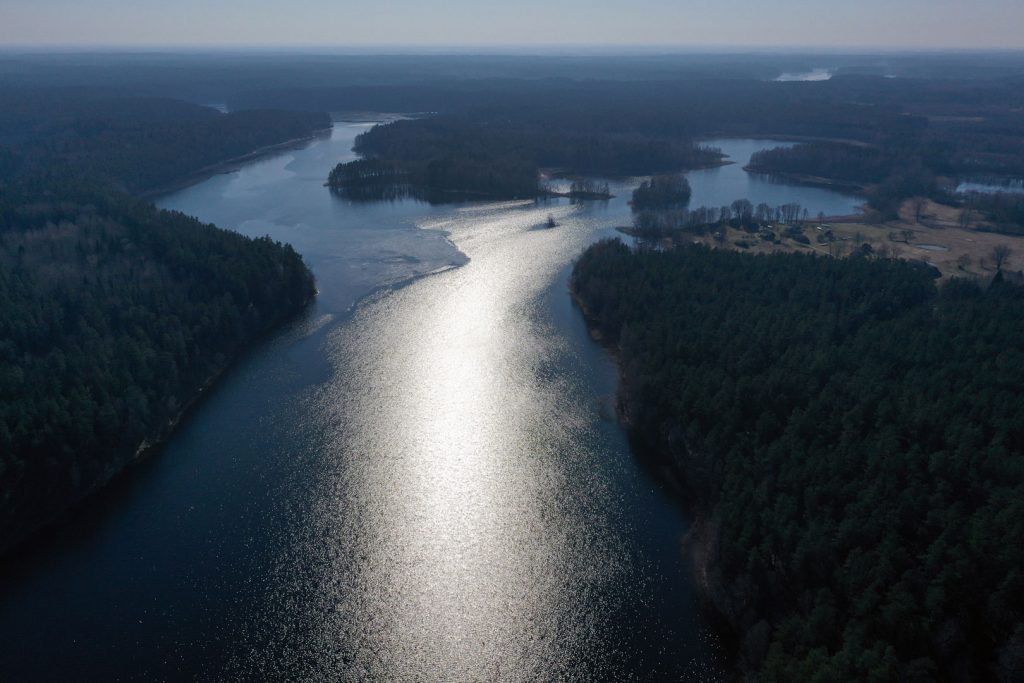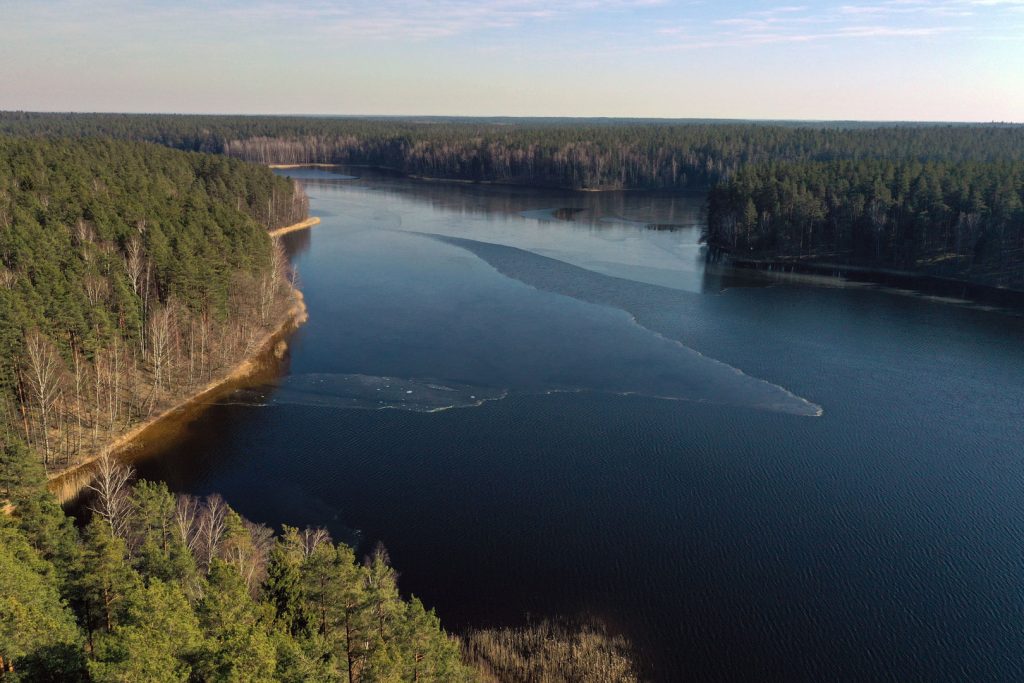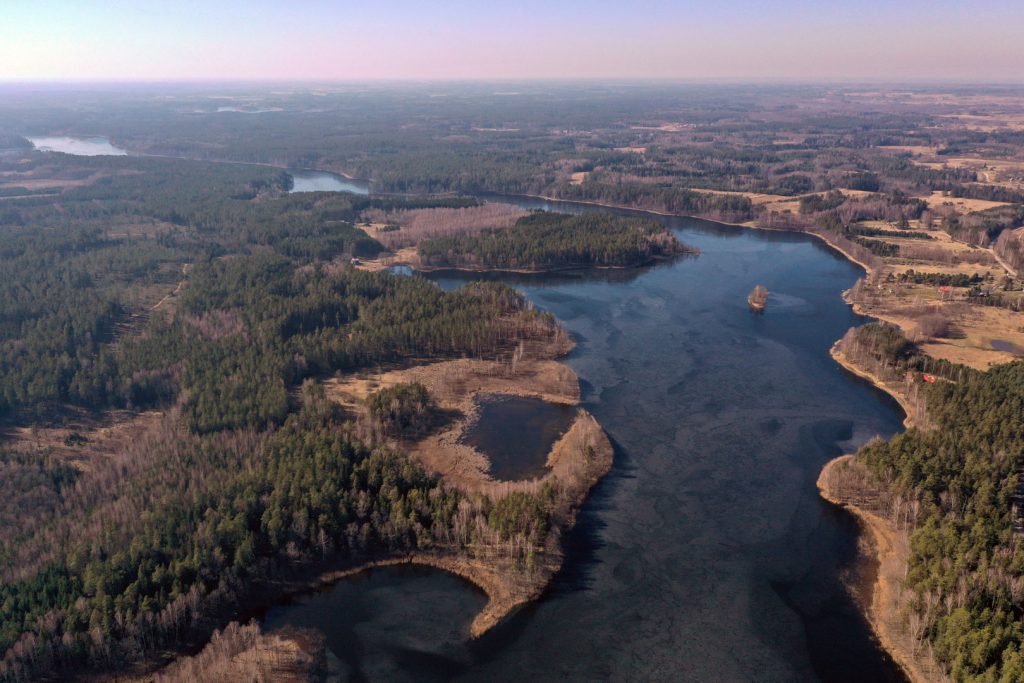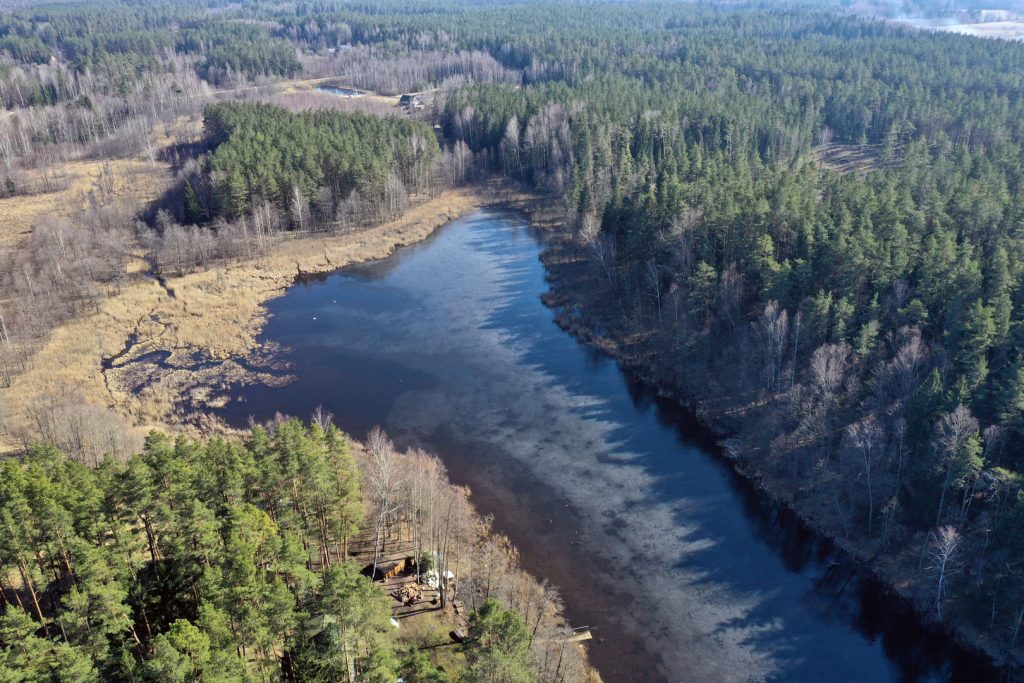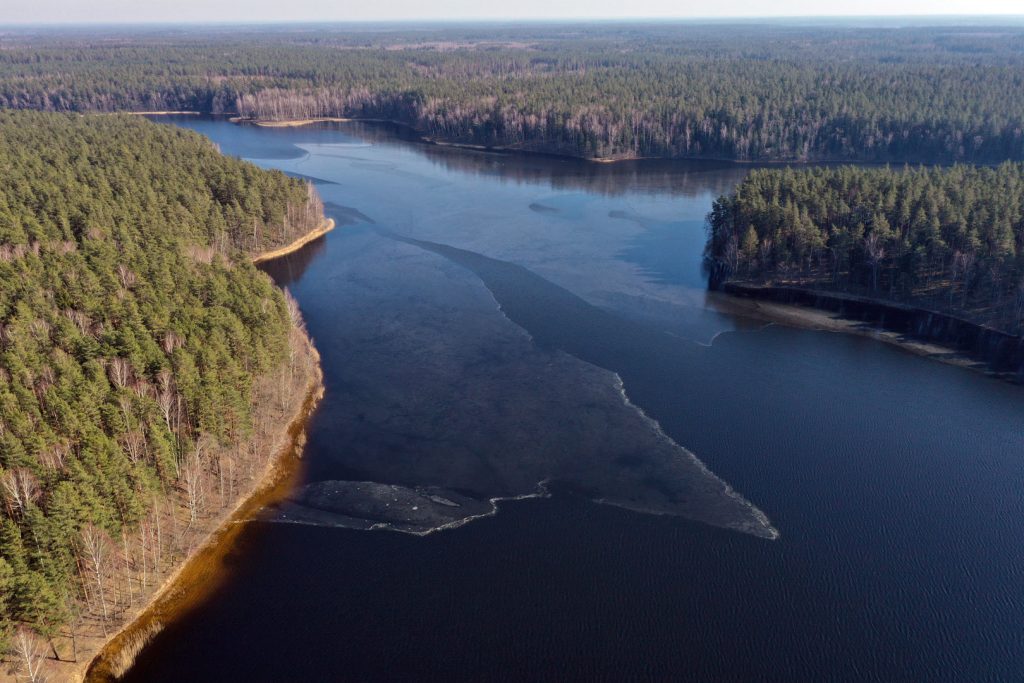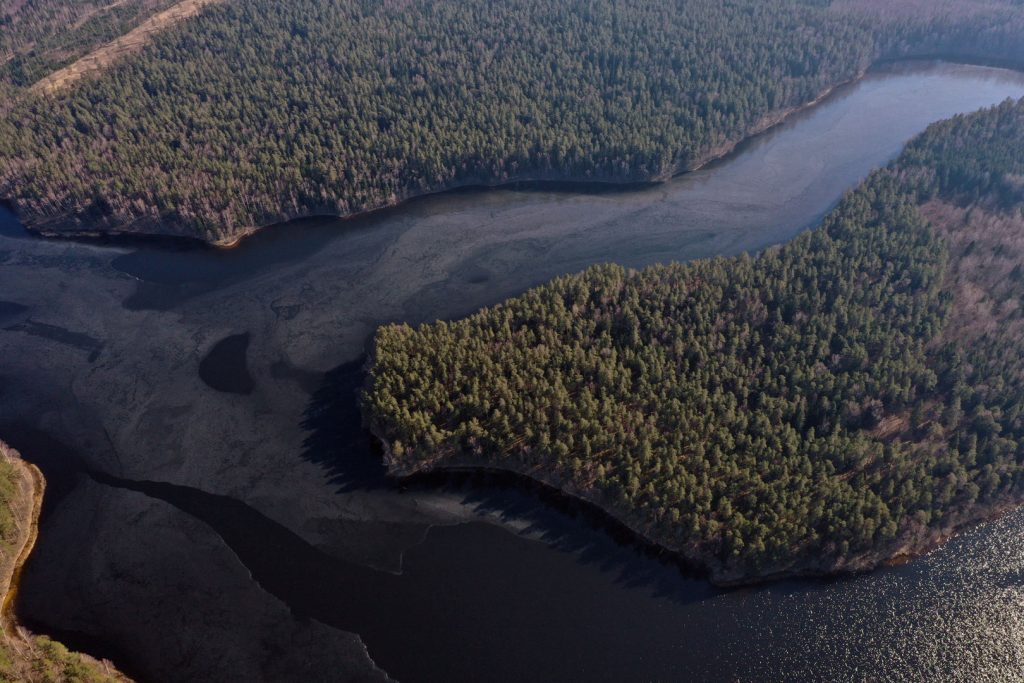Aisetas
Aisetas, is a lake in the territory of Utena and Molėtai district municipalities, 2 km south of Saldutiškis. The area makes up 501 hectares; the length (from the north-east to south-west) 16 km (one of the longest in Lithuania); the largest width 0.6 km.; the surface altitude 148.9 m. The greatest depth 40 m (in the east, near Gatakiemis), average depth 10.4 m. The lake is of glacial trough origin. The coastline is winding, its length 41.5 km. Banks are steep, 8–15 m high, overgrown with forest (in the south-eastern part there is Labanoras Wood). The lake has 5 islands (total area 1.8 ha). In the north Aisetas connects with lake Galuonis by a 200 m wide strait. The sandbank, the zone of reeds and canes is narrow. Aisetas is situated in Aisetas hydrographical reserve (belongs to Labanoras regional park).
The lake has hollows that become sandbars. Hollows are deep and often reach up to 25-35 m. The deepest part is the eastern part near Gatakiemis settlement. The banks are steep, overgrown with forest on all sides as the lake is on the very outskirts of the famous Labanoras Wood. Five rivulets flow into Aisetas, the biggest of which is Alnė flowing from the nearby Alnis lake. From the east Aiseta flows out, a right inflow of the river Žeimena. The lake is linked with Galuonai lake by a strait. Access to Aisetas is quite complicated, therefore, it is not abundantly visited. You will succeed to catch basses, roach, rudds, breams, bleak, pikes, eels, zander trout, vendace, smelts.
Aisetas is a narrow, long and winding lake in the east of Lithuania, in Molėtai (2/3 of area) and Utena (1/3 of area) districts. The total area of the lake is 501 ha. This is one of the longest lakes in Lithuania – the length from the north-east to south-west is 16 km, the greatest width 0.6 km. The greatest depth, 40 m is in the eastern part (the one which belongs to Utena district), the average depth 10.4 m.
Lake Aisetas is of glacial troughorigin. Its trough is the longest in Lithuania; its narrow steep-sloped trough (average width 0.35 km) was washed out by the river which once flew from the outskirts of melting glacier. Most probably from this the name of the lake originated since its root „ais“, according to one of linguists‘ versions, means „to move fast, to hurry“. The feeding basin is approximately 23 times bigger than the lake itself; however, it is sandy and overgrown with forest, which is why there are no many nutrients in the water. The banks are winding (the length 41.5 km), steep, 8-15 m high, overgrown with forest (in the south-eastern part there is Labanoras Wood). The clarity of water in summer is up to 3 m. The water temperature at the bottom is about 4-5 °C all year round, the surface layer of warm water in midsummer reaches about 5 m. Sandbars are narrow, so bands of reeds and canes are patchy and become wider only in bays isolated from wind. This is a mesotrophiclake. There has been found a water plant of a third category protected by the Red Book – water thyme. In the north Aisetas connects with lake Galuonis by a 200 m wide strait. The river Kiauna (an inflow of Žeimena) flows through Aisetas, which is called Aiseta between Aisetas and Kiaunas lakes. The river Alnė (west of lake Alnis) flows into the lake as well as 4 other nameless rivulets. The following villages are situated near Aisetas: Alnė, Žvaigždžiakalnis, Saliniškis, Šnieriškės, Pavajuonis, Paeisetė II, Gatakiemis, Ščiurys.
